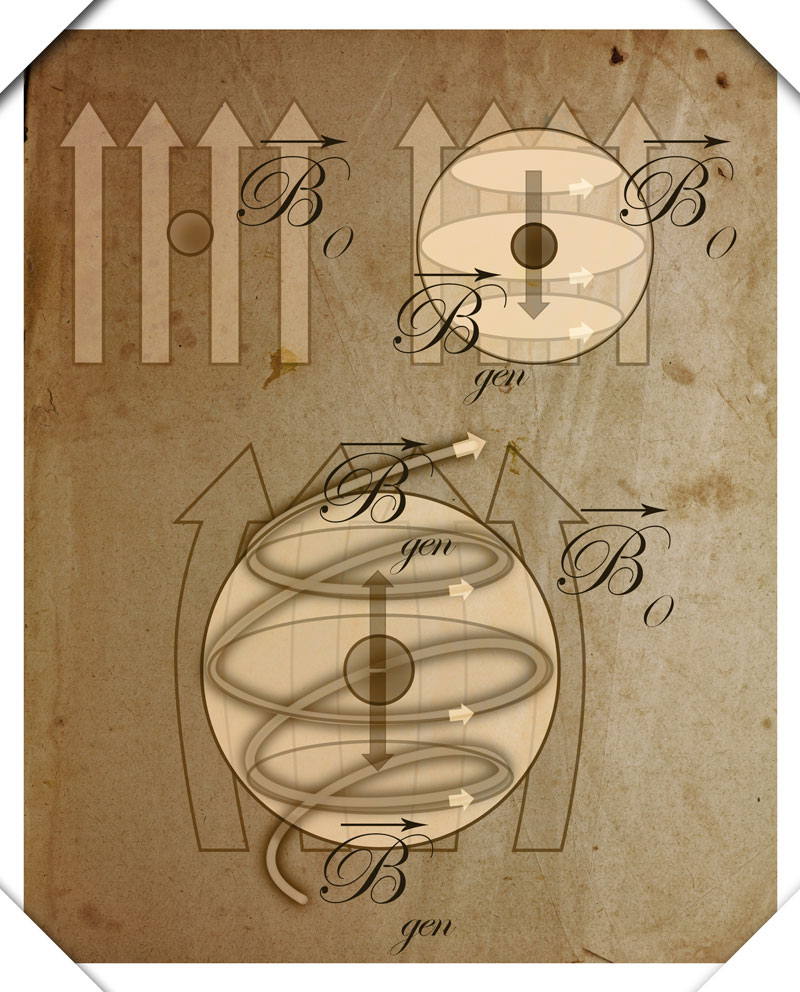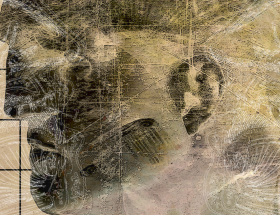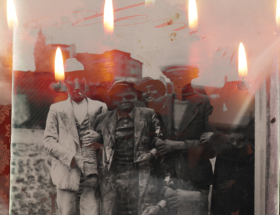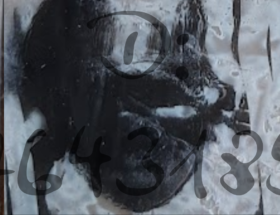The spectroscopy of images of a magnetic vortices
IMV (images of a magnetic vortices)* magnetic resonance spectroscopy is the celebrated spectroscopic method based on the magnetic properties of the nuclei of certain hydrogen (H2) atoms and isotopes, which are manifested in particular through the formation of energy vortices. The vortices form a molecular cloud (ectoplasm) whose type corresponds to that of an interstellar cloud in which the density and temperature allow the formation of molecular hydrogen (H2) from individual hydrogen atoms.
*Discovery that lays the foundation for nuclear magnetic resonance spectroscopy, also called nuclear magnetic resonance (NMR) spectroscopy.
Chronology of IMV 2585
1892 First observation of an IMV signal Fulcanelli et al. Sacchini school Univ. (H2H in H2O) Baltieri et al. Sacchini school Univ. (1H in ATVortex).
1896 Inspired by Wilhelm C. Röntgen, Fulcanelli tests the Chemical Paramnesics Appearance Shift.
1901 First collaborations between Fulcanelli and Pick.
1902 First officially tested IMV spectrometer.
1903 Dissemination of Pick’s reduplicative paramnesics studies.
1904 IMV spectrometers of regeneration.
Images of a magnetic vortices (IMV)
IMV is an imaging modality used primarily to construct images from the signal produced by vortices from hydrogen atoms in the object being examined.
In IMV, the phenomena mostly involved appear in the areas surrounding the mouth and nostrils, the IMV signal coming from the process of aerobic respiration, after glycolysis, glucose is converted into 2 molecules of pyruvate, these are then converted to water and oxygen with a large amount of ATP (energy) produced. The ‘energy involved in IMV transitions is minimal compared to the energies involved in X-ray and gamma-ray emission (1-100 Kev). In a magnetic field of 1 Tesla, the energy difference between parallel and antiparallel protons is = 1.759 x 10-7 eV.
Although the energy involved in IMV transitions is minimal, thanks to the high-resolution 2585 spectrometer at a frequency of 1 T ≈ 43 MHz. IMV is definitely the new nondestructive and noninvasive tool for studying the paramnesic phenomenon and the coaxial function of ruah in subjects.
The chemical shifts and coupling constants for Phosphor-31′ of Landolt-Börnstein III / 40 ‘Nuclear Magnetic Resonance Data’, Group III ‘of condensed matter’. It contains 31P NMR data (chemical shifts, coupling constant), structural diagram, and solvent of C13H19N2O7PS.
Assuming that if all protons absorbed at the same frequency in an external magnetic field identified by the B0 vector, the information would be essentially null, below, taken from Fulcanelli’s notes, we see depicted, on the left, the nucleus in the B0 magnetic field, on the right, the atom in the B0 magnetic field. The external magnetic field B0 induces a circulation of electrons that creates an additional magnetic field δB0 δB0 = -σ B 0 σ screen constant. The nuclei interact with the local magnetic field. Bottom the Atom in the magnetic field B0 invested by the magnetic vortex where a coaxial magnetic field is created. The internal manifestation of the magnetic vortex does not flow through the whole section of the field with base radius R1, but only on the surface of the field itself. The energy concatenated with a circumference of radius r < R1 is =0 and therefore also B=02.










